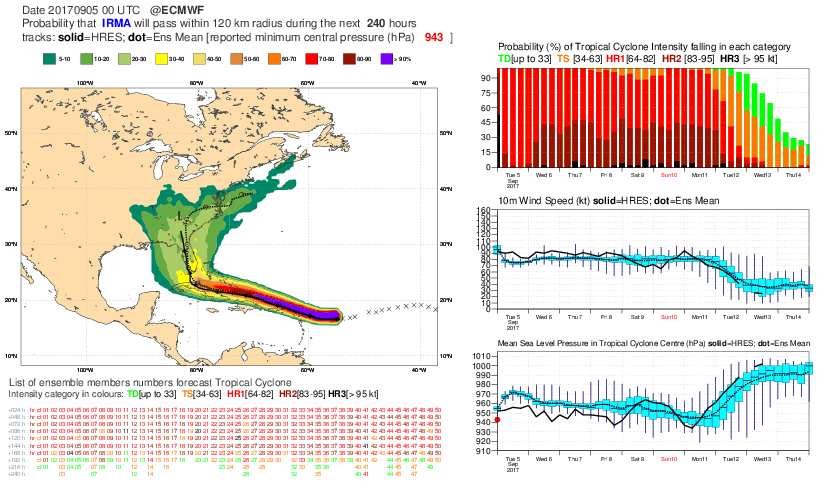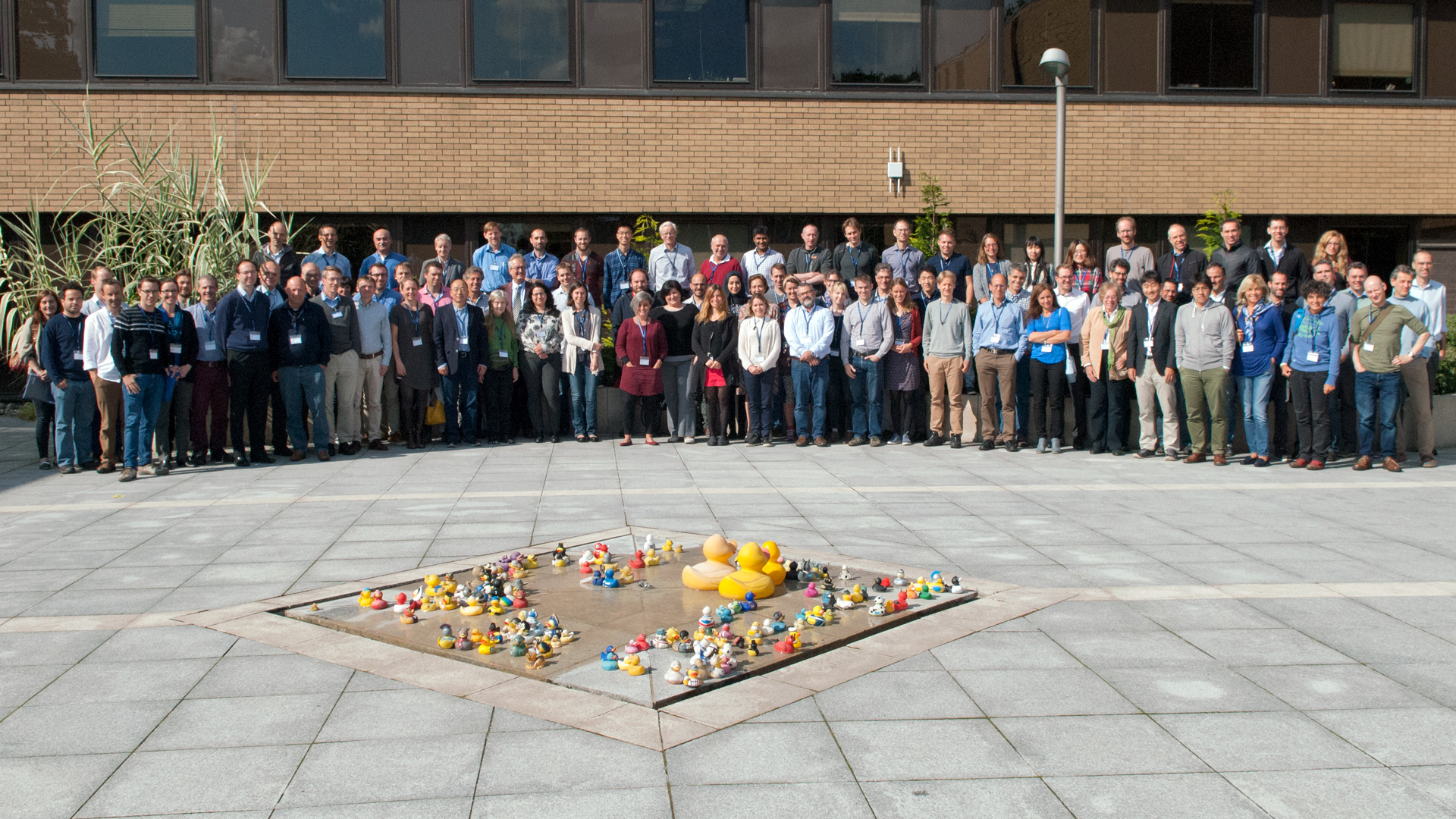Ensemble prediction: past, present and future
Contributed by Fredrik Wetterhall and Roberto Buizza, ECMWF
The work of producing meteorological ensemble forecasts started 25 years ago at ECMWF and NCEP, and it sparked a revolution in both weather forecasts and its many applications. To celebrate this occasion, more than 100 people from across the world joined the 28 speakers at ECMWF’s Annual Seminar 11-14 September held in Reading, UK. The theme was “Ensemble prediction: past, present and future” and the four days where filled with presentations and discussions on what has been done, where we are and how we in the future can further improve the accuracy and reliability of ensemble-based forecasts.
Thanks to advances in models, data assimilation schemes and the methods used to simulate initial and model uncertainties, today ensembles are widely used to provide a reliable estimate of possible future scenarios. This is expressed for example in terms of probabilities of weather events or of risk indices. Increasingly, ensembles are routinely used to provide forecasters and users with the range of weather scenarios that could happen in the future. An example is given by the ECMWF ensemble-based strike probability of hurricane Irma, issued by ECMWF on 5 September.
The ECMWF ensemble-based strike probability that hurricane Irma would pass within a 120 km radius during the next 10 days, issued on the 5th of September (left panel).
Using ensemble forecasts
Different aspects of ensemble forecasting were discussed during the seminar, and they included the history and theory of ensemble forecasting, initial conditions, model uncertainties, error growth, predictability across scales, verification and diagnostics and future outlook. The full programme including recordings of the talks can be found here. The theme that may be of most interest for the HEPEX community was devoted to applications of ensemble forecasts. The session discussed the various ensemble products that now exist to help decision making (David Richardson, ECMWF), hydrological ensembles including the HEPEX experience (Hannah Cloke, Reading University) and observing and supporting the growing use of ensemble products (Renate Hagedorn, DWD). The session was testament as to how mainstream ensemble forecasts have become, not only in science but also in institutions and authorities that use probabilistic information in decision-making. There is still a lot to do to overcome some of the existing barriers, but the acceptance of ensemble forecast is truly a success story.
Panel discussions and looking forward
The seminar also included a panel discussion which provided an opportunity to explore and discuss in more detail some of the fundamental questions that are currently being tackled by the community, such as:
- Should we be moving to small ensembles at high resolution, or large ensembles at more moderate resolution?
- If the most cost-effective ensemble structure changes with lead time, should our ensemble be built so as to give a resolution and ensemble size that changes with lead time?
- If an ideal ensemble consists of a set of equally likely members, is there a role for an unperturbed/central forecast?
- What do we expect from the future in terms of our ability to represent model error in ensemble systems, and the representation of perturbations more generally?
It can be interesting to report some of the comments raised during the lively panel discussion:
- Some users would react also at small probabilities: they would be the ones benefiting more from a size increase;
- Ensemble size very is important both for the extended/long ranges and for high-resolution ensembles, to be able to capture the fine-scale details;
- Considering the range of users of the ECMWF ensembles, overall, a size of 50 seems about right; although ECMWF principal aim should be to provide the best raw ensemble forecasts, it should work with the users to develop calibration methods, and understand whether the balance between ensemble size and resolution should be revisited once calibration methods are more widely used;
- ECMWF should aim to provide the national meteorological services and its users with ensemble-based probabilistic forecasts that could be used by a wide range of users; it will be then up to the national meteorological services and/or third parties to design ‘tailored’ ensemble configurations that can address the needs of specific users;
- We need more observation-based diagnostic to understand model error, and design better schemes;
Participants of the ECMWF Annual Seminar 2017. Photo: Simon Witter, ECMWF
The HEPEX community was an early advocator of using ensemble forecasts and it is important that we continue to push the boundaries of how ensembles should be used in research and applications. A good way of doing just that is to come to the HEPEX workshop in Melbourne next year!


September 20, 2017 at 09:09
Great talks! Thanks for making them available for those who couldn’t make the trip